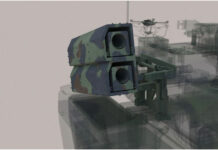A major shift in acquisition strategy, shrinking resources and ambiguous military posture in Afghanistan and Iraq are only some of the trends contributing to the uncertainty reflected this year at the exposition of defense industries gathered for the annual Association of the U.S. Army (AUSA), held in Washington DC last week.
The obvious preference nowadays is doing more with less – repair, maintain and sustain what you have in hand, buy what you must have now, and push back everything else to better days. This attitude was reflected along the exhibition aisles, absent of major new systems requiring major commitments and funding, the displays showed abundant ‘life extension’ for current systems; army material command and its Program Executive Offices (PEOs) exhibited masses of new and ‘off the shelf’ systems, recently acquired in response to urgent requirements from theater. The present focus is on supporting the systems in the filed, rapidly fielded to better respond to the changing operational conditions – a daunting task, given the scale and intensity of system’s usage in the field and today’s challenging economical conditions.
Worn down by the extensive combat use and harsh environmental conditions in theater, used equipment is being repaired and reconditioned through the post deployment reset, offering an opportunity for systems improvements and modernization. This process has replaced much of the programmatic product improvements processes of the past. The planned insertion of ’spin-outs’ from the Future Combat Systems program into the first Brigade Combat Team is scheduled to be carried out in 2011, as part of the brigade’s post combat reset process. This program will include the installation of new radios, networking systems and inclusion of certain software updates to upgrade command and control elements, in addition to the supply of new sensors, unmanned systems and missiles.
While armored vehicles are the systems making much of the news these days, Intelligence, Surveillance and Reconnaissance (ISR) capabilities and more specifically the Unmanned Aerial Systems (UAS), and helicopters are among the ‘most wanted list’ of military hardware.




















